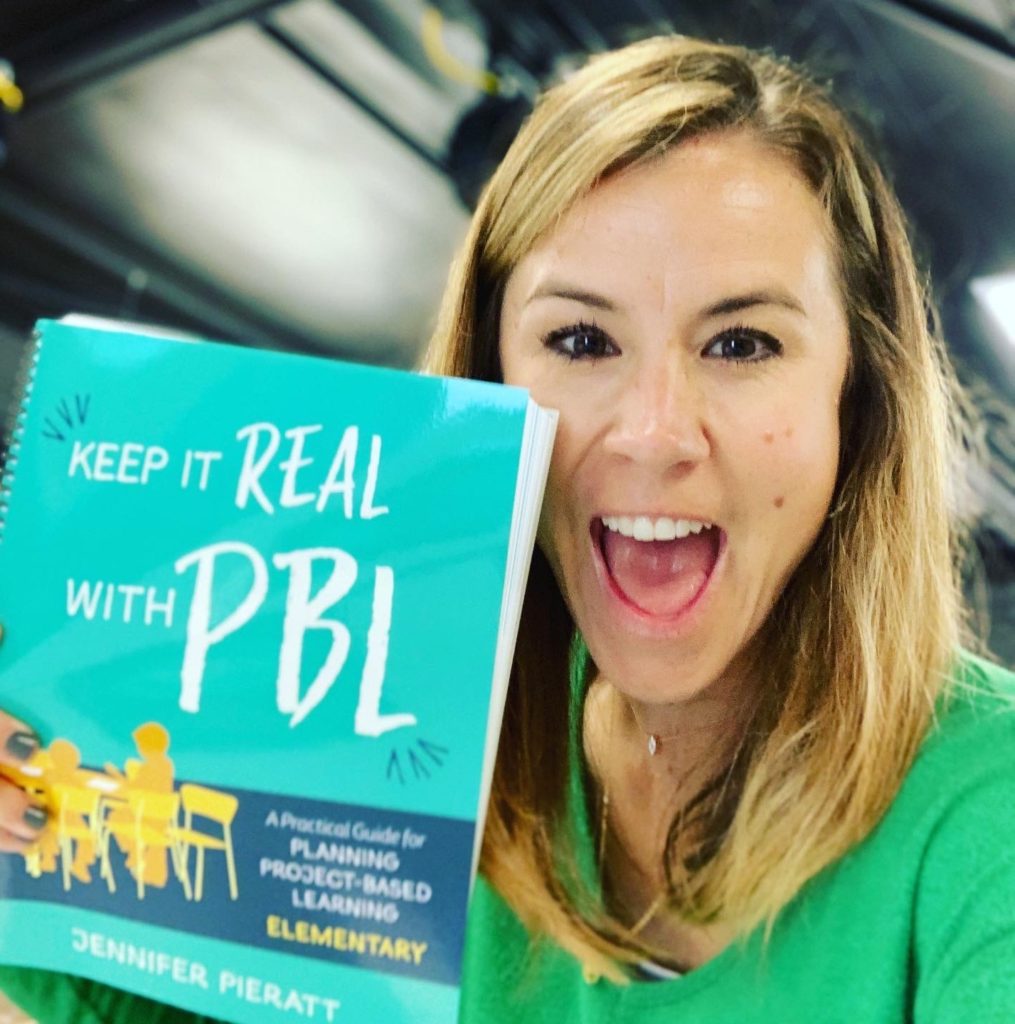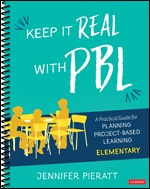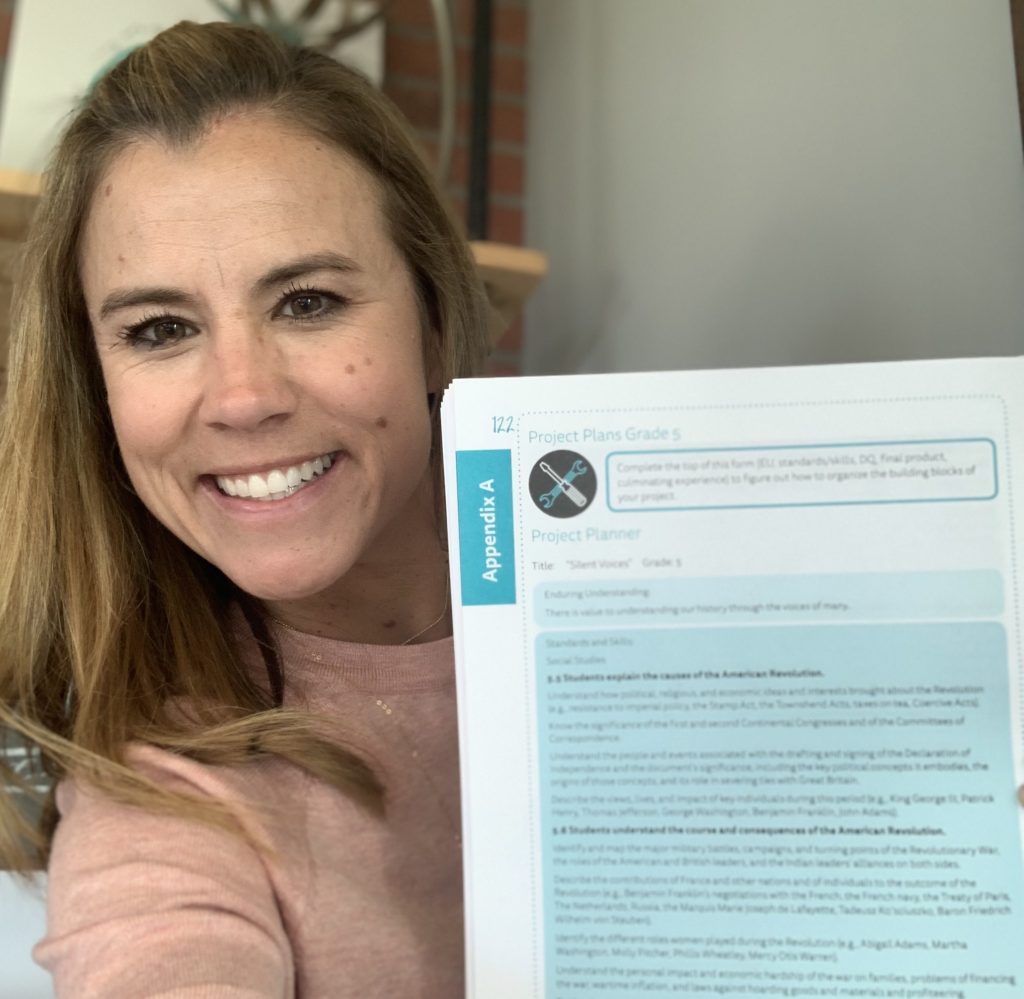As a professional development facilitator myself, I spend lots of time working with teachers and students. Whether in workshops or side-by-side in classrooms, a popular topic of conversation PBL. Specifically, how to create a classroom environment for project-based learning. So I’m always on the lookout for tips for project-based learning to share with educators.
I recently connected with Dr. Jennifer Pieratt. She is a fellow Corwin author and has two new resources full of tips for project-based learning. The first one is titled, Keep It Real With PBL, Elementary: A Practical Guide for Planning Project-Based Learning. And her newest book is called Keep It Real With PBL, Secondary: A Practical Guide for Planning Project-Based Learning. You can find them both on Amazon as well as Corwin’s website.
Jennifer was kind enough to answer my questions about her work, and I’ve shared them in this blog post. Below, you’ll find more information to take into your own PBL journeys this school year. I can’t wait for you to check out these tips for project-based learning. These resources are full of ideas you can put into action right away. Let’s jump into the interview!
Tips for Project-Based Learning
What motivated you to write a book on this topic?

This workbook reflects the project planning process I have developed from my experience in the trenches of project-based learning (PBL) over the past decade. From my time as a founding staff member at High Tech High North County to serving as a school development coach for New Tech Network and a national faculty member of the Buck Institute for Education, I know firsthand how challenging designing projects can be. When I set out to support teachers independently through my company, CraftED, I committed to honoring the reality every teacher faces: standards, assessment, and the need for structure.
Too often, there is a disconnect between the romantic ideals of PBL and the real challenges that are in front of teachers — a classroom full of twenty-five to thirty diverse needs, district pacing guides, lack of resources, and forever-changing curriculum implementation. I was inspired by the notion that a dear friend offered up one day when she said, “This PBL thing seems really hard for teachers; you should just keep it real with them—that’s probably what they would appreciate most.”
And so began my personal PBL #realtalk campaign — no fancy frameworks, no more jargon, no more ignoring the challenges and fears of teachers being asked to do this work. You can hear more about my inspiration for the book in this podcast episode of Born to Write.
PBL in Action
Why is this topic of PBL important to you?
I believe deep in my bones that every child deserves the opportunity to be challenged and engaged, every teacher is worth investing in their craft, and every community deserves to enlist in the process of collectively developing their future. You can read more about why PBL makes me unapologetic about this in my blog post for Corwin.
In this new guide, you talk about PBL in elementary with a second book coming out next year with a secondary focus. What are some similarities and differences between PBL in these two settings?

Great question! I see the planning process as a very different one depending on grade levels; for example, in elementary ~ teachers can easily integrate all (or most) content areas. Therefore it’s easier to enter into the work from more of a thematic angle. Elementary teachers are also usually focused on management challenges and how PBL can work with teaching foundational skills-which shifts our work to getting really clear on scaffolding within projects.
Secondary is often operating in isolated disciplines, so we spend a good deal of time talking about how to integrate other content areas and collaborate with colleagues. Both secondary and elementary teachers appreciate seeing grade-level examples that align with what they teach, so my book and workshops always provide responsive (grade-appropriate) examples, as well.
PBL in EdTech
In your book, you discuss tips for managing projects. Are there any technology tools you would recommend to help with this?
I actually just presented on this topic at the Fall Cue Conference! You can access my presentation here, where I discuss how to integrate technology into PBL — specifically how tools can help with management. I also wrote a blog post for CUE on that exact topic.
Digital tools can connect classrooms from around the world. Have you seen technology facilitate any PBL connections?
Yes! I love seeing technology used to bring the outside world in for students through fieldwork — whether connecting with an expert in a field related to project content or an end-user to provide feedback to students on their ideas and project progress.
I also think social media can be a great vehicle for classes to connect with the outside world by showcasing their learning. One of my favorites to follow is Camille Nunnenkamp.
PBL Book Clubs
What advice would you give a group of educators who want to hold a book club for your book?

I’m always a big advocate for teachers planning together (typically by grade level); I would suggest that teachers create a PLC or book club who can actually plan projects together. The book is extremely practical — it provides space for journaling and planning an actual project-it is a “build it as you go” approach to planning, so a group could actually collaboratively build a project as you read-a two for one!
I also encourage schools I support to start slowly with PBL-so the teachers could design and run the project (from the early chapters), before diving into the nuances of project design (i.e., the project launch, exhibition, etc.), which are reflected in the later chapters. Once teachers have run their first project, they can reflect and refine and consider how to incorporate ideas from the later chapters of the book.
How can readers connect with you and learn more about your work?
Readers can follow my work on social media and check out my PBL e-courses. They can also email me at jenny@craftedcurriculum.com, or sign up for my monthly newsletter on my website.
Teacher Tips for Project-Based Learning
If you’d like to learn more about Dr. Jennifer Pieratt, check out her excellent website CraftED. It’s full of resources and tips for project-based learning. Her grade-level specific resources for PBL are now available on Amazon:
- Keep It Real With PBL, Elementary: A Practical Guide for Planning Project-Based Learning
- Keep It Real With PBL, Secondary: A Practical Guide for Planning Project-Based Learning
Have your own tips for project-based learning to share? Leave a comment below or share it on social media. Make sure to tag me @classtechtips and @crafted_jennypieratt.







